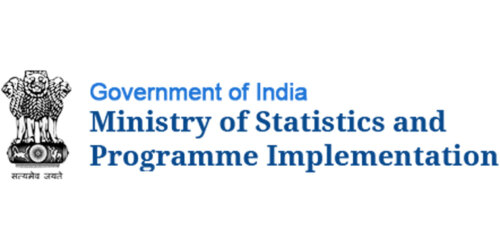Payroll administration is crucial for every corporation as it manages employee salaries, wages, bonuses, net pay, and deductions. Payroll processing is a challenging but necessary corporate function.
In India, payroll processing includes calculating each employee’s entire salary. At the same time, India has a very complex payroll process because of several government rules, various pay rates, and complex calculations. Effective payroll management is essential to preserving employee satisfaction, following legal requirements, and promoting organizational efficiency.
Businesses that operate in India must comprehend the subtleties of payroll processing there. The procedure entails a thorough analysis of the pay scale, compliance with legal obligations, and the calculation of different deductions.
This is a glossary blog that will help you understand how payroll in India works, explore the nuances of payroll operations in India, and how EOR simplifies the payroll process for companies.
Understanding the Salary Structure in India

Let’s first understand the formulas for salary:
CTC
CTC is the total amount an employer spends on an employee in a year, including all benefits and deductions.
CTC= Basic Salary + Allowances + Perquisites + Employer Contributions
Gross Salary
The complete amount of money an employee receives before any deductions are done, including taxes, social security, health insurance, retirement plan, and other payroll deductions, is referred to as their gross salary. Base pay, overtime compensation, commissions, bonuses, and any other earnings before deductions are all included in the gross salary.
Gross Salary= Base Salary + Overtime Pay + Bonuses +Commissions + Allowances
Net Salary
Net Salary is the amount an employee takes home after all deductions.
Net Salary = Basic Salary + Allowances – (Provident fund + Gratuity + TDS + Professional Tax)
Typical salary structure components consist of the following:
Allowances
Allowances provide monetary support for particular employee needs, making them a crucial component of the pay structure. These benefits, in addition to your basic salary, depend on your job function, location, and classification.
Conveyance Allowance: This tax-exempt allowance is given to reimburse transport expenses up to a specific level. Transference Employers provide their workers an allowance to cover the cost of traveling from their place of residence to work.
Under Section 10(14) of the Income Tax Act, Conveyance Allowance is exempt up to INR 1,600 per month (INR 19,200 annually). The allowance is given to cover the cost of transport from home to work and is tax-free as long as it stays under the set amount.
House Rent Allowance (HRA): Subject to certain restrictions, HRA is a tax-exempt benefit given to employees to help with rent expenditures. An employer can include a Housing Rent Allowance (HRA) in a worker’s paycheck to help with housing expenses.
According to Income Tax Act Section 10(13A), HRA is partially tax-free. The actual HRA received is 50% of pay (for those living in metro areas) or 40% of salary for those living in non-metro cities.
10% of pay is deducted from the rent. The employee must not be the residential property owner and must be paying rent to qualify for HRA exemption.
Special Allowance: A fully taxed, flexible component that balances the overall remuneration package. An amount paid to employees that does not fit within the HRA, Conveyance Allowance, or any other specific allowance category is known as a Special Allowance. Usually, it’s employed to draw in and keep workers.
The Income Tax Act provides that Special Allowance is completely taxable. Unless it is given for specified purposes like a child’s education or a hostel allowance, which are exempt in and of themselves, it does not qualify for any special tax exemptions.
By business policy, it may be reorganized to make room for additional allowances or to compensate personnel for exceptional abilities or performance.
Basic Salary
The base pay, which often makes up 40–60% of the overall compensation, is the foundational element of an employee’s compensation. This part is taxable and is the basis for figuring out other parts of the pay, like the Provident Fund (PF) and Gratuity.
Bonuses
Bonuses are an addition to the base pay and fall into one of two categories. One is
Annual Bonuses are often given out on business performance at the end of the fiscal year. Second is a spot bonus which is a fully taxable bonus awarded for outstanding performance or accomplishments.
Deductions
Gross salary is reduced by deductions to determine the net salary.
- Employee Provident Fund (EPF): An employee’s retirement benefit from their employer is called a provident fund. Every month, the employer contributes the same amount to this fund as the employee, with the employee’s CTC contributing a certain percentage of their salary. A mandated retirement savings plan usually consists of 12% of base pay, with contributions from the company and employees.
- Professional tax: different rates apply to different states. Income tax deducted by the employer based on the employee’s wages and appropriate tax slab is known as “Tax Deducted at Source” (TDS).
Gratuity
A gratuity is a one-time payment given by an employer to a worker as a thank-you for their contributions to the company. Usually, it is paid out upon resignation, retirement, or passing away.
Employees in India who have worked continuously for a minimum of five years are eligible under the Payment of Gratuity Act, of 1972.
Regarding workers protected by the Act, gratuity is calculated as (number of years of service × 15 × last drawn wage) / 26.
For workers who the Act does not protect, gratuity is calculated as (number of years of service × 15 times last drawn salary) / 30.
Employees covered by the Act are free from paying taxes on gratuities up to ₹20 lakh. The maximum amount for workers who the Act does not cover is ₹10 lakh.
Medical Allowance
A medical allowance is a set sum of money an employer gives workers to cover their medical costs.
Up to ₹15,000 in annual medical reimbursement was tax-exempt when used to officially approve medical expenses. However once the standard deduction was implemented, this exception was eliminated starting in FY 2018–19.
Instead of medical and transport allowances, salaried individuals now receive a standard deduction under the taxable amount calculation of 50,000.
Salary Breakup Format:
| Component | Description | Percentage |
| Basic Salary | The fixed salary amount forms the base of the salary structure. | 40-60% |
| House Rent Allowance (HRA) | An allowance to cover the cost of rented accommodation. | 40-50% |
| Conveyance Allowance | An allowance to cover travel expenses related to work. | 5% |
| Medical Allowance | An allowance is given to cover medical expenses. | 5% |
| Special Allowance | The specific allowances paid by the company and it varies depending on the company’s policies and the employee’s position. | 10-30% |
| Employee Provident Fund (EPF) | The employer matches the employee’s deduction towards the retirement fund by contributing an equal amount. | 12% or a fixed min. sum |
Regulatory Aspects of Payroll

The Minimum Wages Act, 1948
The Minimum Wages Act, of 1948 comes into effect of India’s labor laws, making it compulsory for employers to pay a minimum wage. The parliament enacted the Minimum Wages Act 1948 for the economic well-being and social justice of the workers.
In this act, employers are supposed to pay a minimum wage to employees. This act ensures that the workers are paid to fulfill their basic needs. This minimum wage is determined by the government and also based on that region’s cost of living. This act is applied to both skilled and unskilled workers. This act also offers other benefits such as allowances for overtime, and penalties for non-compliance. The Act protects workers’ rights and ensures they are paid a fair wage.
The Payment of Wages Act, 1936
The Payment of Wages Act of 1936 governs the complete and on-time payment of wages to workers, exclusive of any unlawful withholdings from taxes. It guarantees that employees making less than a specific wage threshold receive their money on time—usually once a month—and that no unlawful deductions are made from their pay.
Its goal is to shield workers from exploitation by making sure they have a stable income through timely payments. The Act specifies when penalties, deductions for absence, and deductions for employer-provided amenities are permitted.
The Employees’ Provident Funds and Miscellaneous Provisions Act, 1952
All establishments with twenty or more employees are subject to the jurisdiction of the EPF Act. This is comprehensive, covering both the public and private sectors, with particular exceptions for particular worker types.
Employers and employees are required by the EPF Act to contribute 12% of each employee’s base pay and dearness allowance. The employer’s contribution is noteworthy for being split, with 8.33% going to the Employee Pension Scheme and 3.67% going to the Employee Provident Fund (EPS).
Additionally, it allows access to the entire corpus in the event of a specific contingency, such as unemployment illness, or retirement. With the help of the EPF Act, workers can save money for retirement and have a stable financial future.
Respect for the EPF Act is essential for maintaining regulatory compliance, advancing employee welfare, and developing a motivated and devoted staff.
The Payment of Gratuity Act, 1972
The gratuity amount is dependent on the number of years the employee has served in the organization and the amount on their paychecks. The Payment of Gratuity Act of 1972 states that employees who have continued their tenure for at least five years with the same employer are liable to receive gratuities.
This act is covered by Manufacturing plants, mines, oil fields, plantations, ports, railroads, and companies employing 10 or more than 10 employees. If the employee has served for a long period, the company will pay for the service, and if the employee retires, resigns, or passes away, the company has to assure a lump sum payment.
The Income Tax Act, 1961
The Income Tax Act of 1961 governs income taxation in India, encompassing salaries and related benefits. It lays forth the rates at which companies are required to deduct income tax at the source (TDS) from employee salaries.
The Act provides a range of exclusions and deductions to reduce taxable income and ensure that the tax burden is appropriately adjusted based on the taxpayer’s financial situation. It is crucial to the management of income tax administration because it ensures that the government will generate adequate money and provide citizens with accurate information about their tax obligations.
Recent
Disclaimer
This blog is created for informational purposes. Everybody is requested to seek advice from an expert before making a decision based on the information given in the blog. Remunance disclaims any liability/loss or damage caused by using the information, directly/indirectly, given in this blog.




 Schedule a free call
Schedule a free call